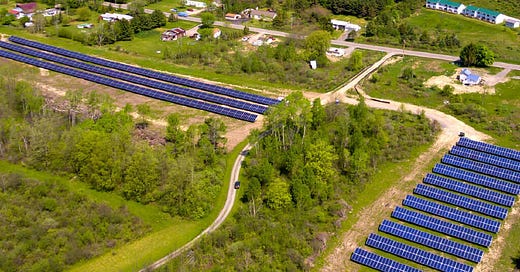September Deadline Season Is Back!
For the second year in a row, Congress faces a potential Government shutdown and expiring Farm Bill at the end of September. Federal budgets important to rural America hang in the balance.
The U.S. House of Representatives and U.S. Senate returned to Washington, DC this week after their annual “August Recess.” Their “must-do” agenda is daunting. They must pass a federal FY2025 budget (FY = “fiscal year,” which begins October 1, 2024), or extend the current budget (called a CR, “Continuing Resolution”) , by September 30th. The Farm Bill, already extended a year passed its expiration date last year at this time, must either be extended or passed by month’s end. And this is all happening during an election year.
Speaker of the House Mike Johnson (R-LA) announced his plan for a 6-month CR last week. That package included a controversial Republican provision that mandates proof of citizenship in order to vote. Johnson did not include a Farm Bill extension in his plan. He originally hoped for a vote on his proposed CR tomorrow, September 11th, but many in his own Republican Caucus are now opposing the plan. The Democratic-controlled Senate would almost certainly reject Johnson’s move tying a CR to voting rights roadblocks.
Farm Bill re-authorization work is virtually nonexistent. The Republican House Agriculture Committee draft passed the Committee mark-up process in May, but hasn’t been scheduled for a floor vote. The Democrat led Senate Agriculture Committee hasn’t even issued a draft. Already on a one-year extension, Congress must act by September 30th to once again maintain funding of the 2018 Farm Bill.
Hundreds of billions of federal dollars for rural people and rural communities are at stake. From nutrition programs for poor and working class people to government payments to farmers, high speed internet to rural hospitals, federal spending is a crucial economic engine for rural America.
USDA Invests $7.3 Billion in Clean Energy Funding for Rural Electric Cooperatives.
The Biden-Harris Administration announced $7.3 billion in clean energy funding for Rural Electric Cooperatives (RECs) last week. Through the Empowering Rural America (New ERA) program, the 16 REC clean energy projects will leverage private investments of more than $29 billion to build more than 10 gigawatts of clean energy for rural communities across the country, according to the U.S. Department of Agriculture (USDA). USDA estimates that at least 43.7 million tons of greenhouse gases would be avoided annually, around the same annual greenhouse gas pollution as generated by 10 million cars.
“Last week’s announcement represents the largest investment in rural electrification in history - an investment that will drive innovation at rural electric cooperatives for decades to come,” Erik Hatlestad (Director of Rural Cooperative Energy at CURE) told The Cocklebur. “This historic moment has been made possible by a coalition of rural advocates fighting for the future of electric cooperatives across the country. Now is the time for our co-ops to capitalize on the rural energy transition to benefit farmers, workers, and rural communities.”
The USDA says the New Era projects will deliver clean electricity to approximately 5 million households across 23 states. States served include: Alaska, Arizona, California, Colorado, Florida, Illinois, Indiana, Iowa, Kentucky, Michigan, Minnesota, Montana, Nebraska, New Jersey, New Mexico, Nevada, North Dakota, Ohio, Pennsylvania, South Dakota, Texas, Wisconsin and Wyoming. 20% of rural households, farms, businesses, and schools in the nation are in the region served by selected projects. USDA estimates that more than 4,500 permanent jobs and 16,000 construction jobs will be created by the funding.
New Era funding was provided by the Democrats’ Inflation Reduction Act.
The Cocklebur covers rural policy and politics from a progressive point-of-view. Our work focuses on a tangled rural political reality of dishonest debate, economic and racial disparities, corporate power over our democracy, and disinformation peddled by conservative media outlets. We aim to use facts, data, and science to inform our point-of-view. We wear our complicated love/WTF relationship with rural America on our sleeve.




